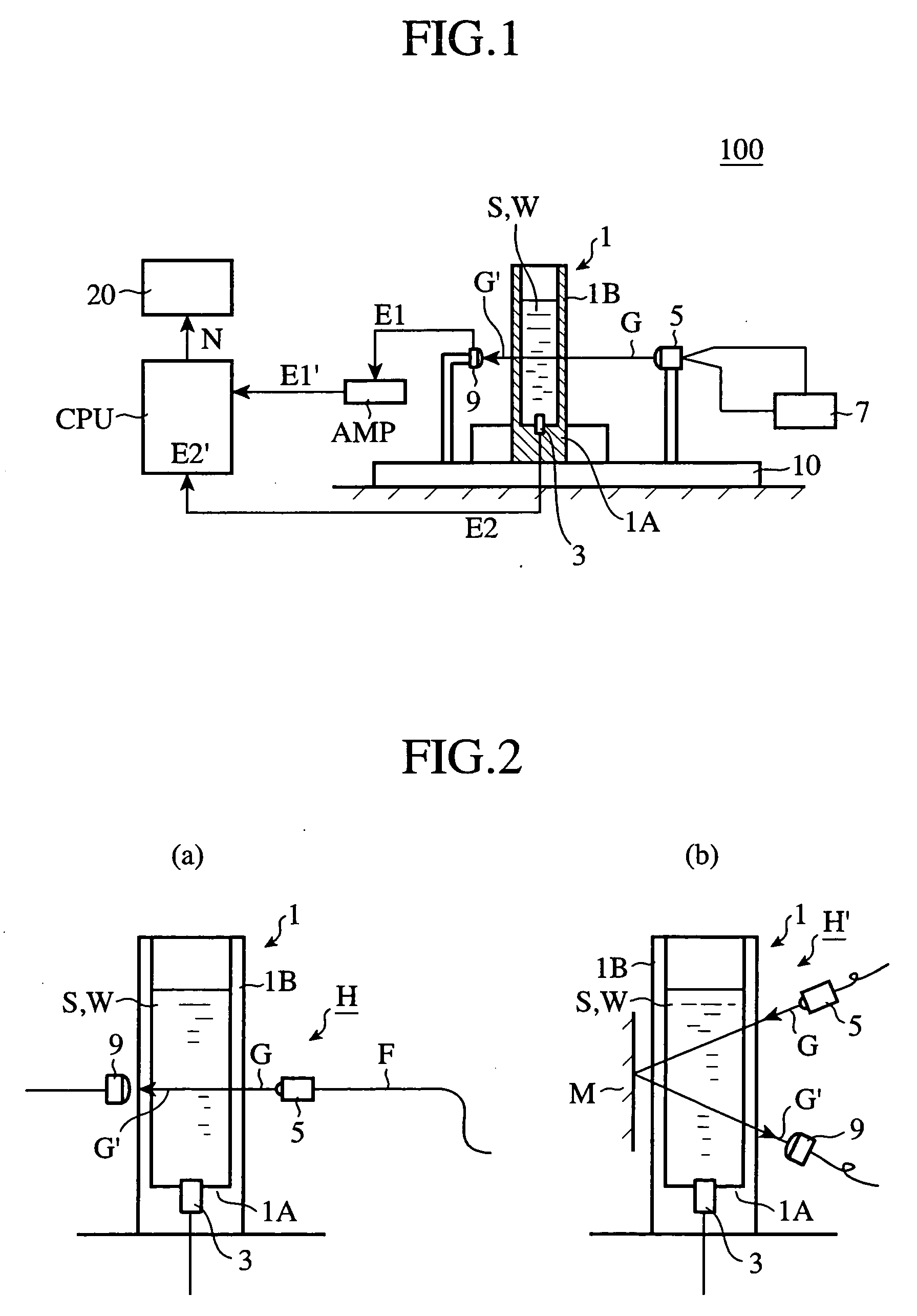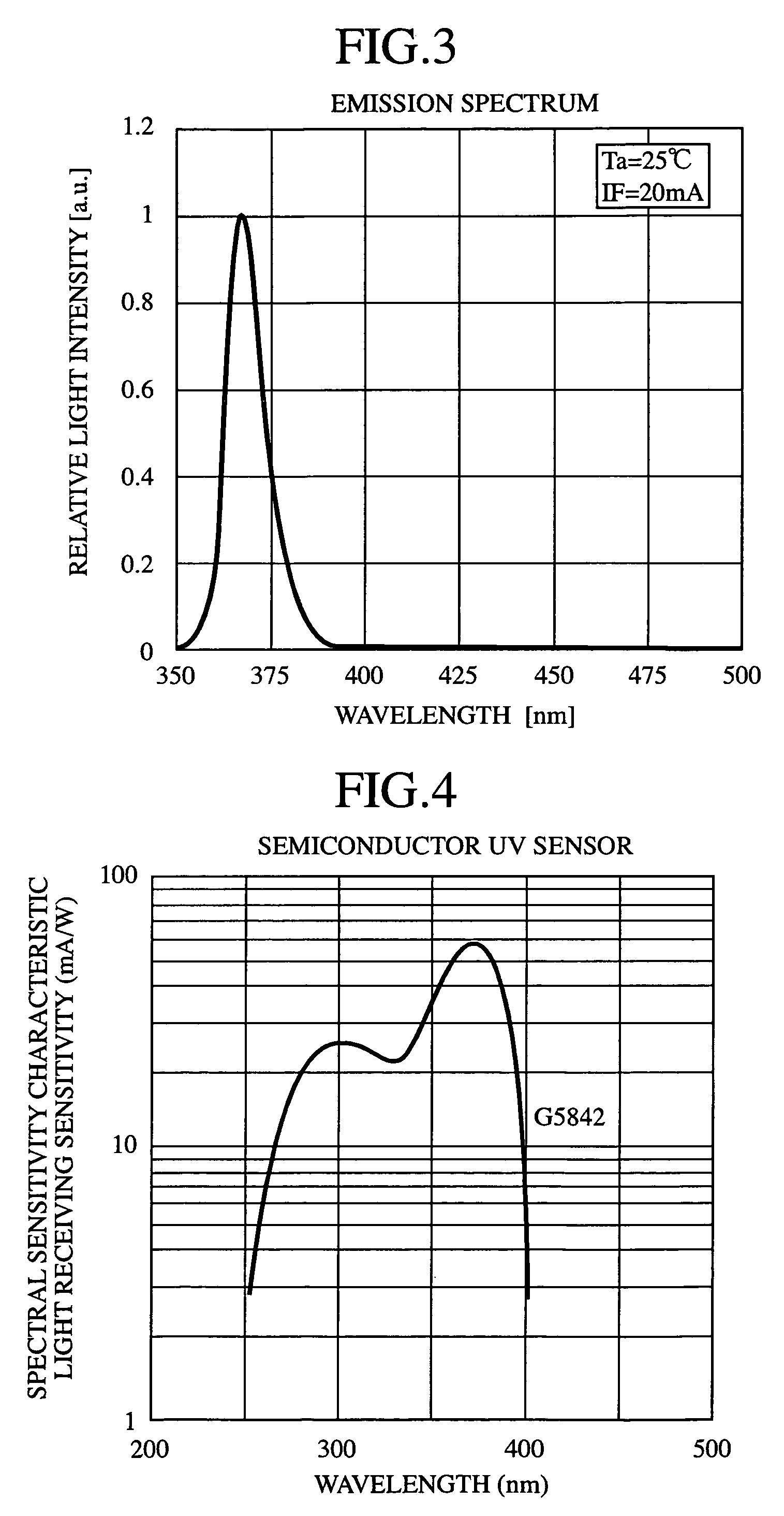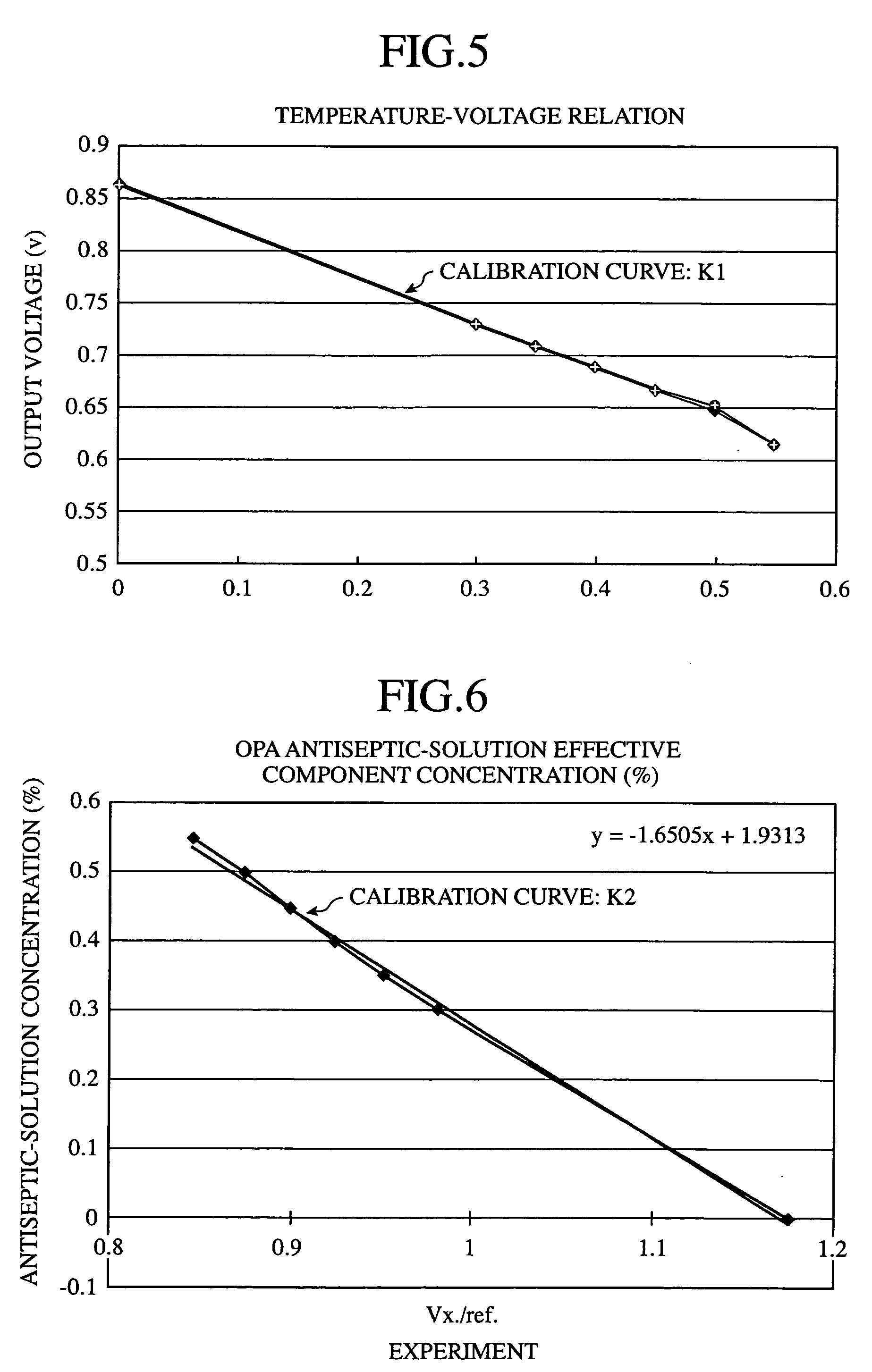Method and equipment for measuring the concentration of antiseptic solution
a technology of antiseptic solution and concentration, which is applied in the direction of color/spectral property measurement, chemical method analysis, instruments, etc., can solve the problems of inadequate disinfection, low effective concentration of components, and method to measure, so as to reduce the amount of antiseptic solution under measurement, suppress the effect of antiseptic solution exposur
- Summary
- Abstract
- Description
- Claims
- Application Information
AI Technical Summary
Benefits of technology
Problems solved by technology
Method used
Image
Examples
embodiment 1
[0017] A description will be given, with respect to the accompanying drawings, of the method and apparatus for measuring the concentration of an antiseptic solution of the present invention. FIG. 1 illustrates in block form an apparatus 100 for measuring the concentration of an antiseptic solution according to the present invention, and FIG. 2 shows in section different arrangements of light-emitting and light-receiving parts set in an optical cell. FIG. 3 is graph showing the spectrum of light emitted from the light-emitting part, and FIG. 4 is a graph showing the spectral sensitivity of the light-receiving part. FIG. 5 is a graph showing the relationship between the concentration of an antiseptic solution and the output voltage from the light-receiving part, and FIG. 6 is a graph showing the relationship between recorded output values and the concentration of the antiseptic solution.
[0018] Referring first to FIG. 1, a description will be given of the general configuration of the ...
first embodiment
[0023] Next, a description will be given below of calibration and concentration measuring methods by the antiseptic-solution concentration measuring equipment 100. The calibration according to the invention is carried out as shown in FIG. 7 which is a calibration flowchart. In the first place, prepare an antiseptic solution (the indicated concentration of a commercially available undiluted antiseptic solution is assumed as positive) and water (concentration: 0%). In step A, “pour the undiluted antiseptic solution into the optical cell and measure the absorbance of the antiseptic solution.” In step B, “record the output voltage (V1),” In step C, “remove the antiseptic solution from the optical cell.” In step D, “pour the water (of 0% concentration) into the optical cell and measure the absorbance of the water.” In step E, “record the output voltage (V2).” In step F, “remove the water from the optical cell.” In step H, “plot the calibration curve K1 by a linear expression based on the...
second embodiment
[0024] Next, the calibration method according to the invention will be described with reference to FIG. 8. This calibration method utilizes an additional function for reducing measurement errors caused by electrical fluctuations in the measuring equipment (variations in the output from the amplifier due to its temperature characteristic, variations in the quantity of light from the light source, and so on) during measurement.
[0025] In the first place, prepare an antiseptic solution (the indicated concentration of a commercially available undiluted antiseptic solution is assumed as positive) and water (of 0% concentration). In step A1, “measure the transmittance of an empty optical cell {record the output value (Ref. 1)}. In step A, “pour the undiluted antiseptic solution into the optical cell and measure the absorbance of the antiseptic solution.” In step B, “record the output voltage (V1).” In step C, “remove the antiseptic solution from the optical cell.” In step C1, “compute V1 / R...
PUM
| Property | Measurement | Unit |
|---|---|---|
| concentration | aaaaa | aaaaa |
| absorbance | aaaaa | aaaaa |
| ultraviolet absorbance | aaaaa | aaaaa |
Abstract
Description
Claims
Application Information
 Login to View More
Login to View More - R&D
- Intellectual Property
- Life Sciences
- Materials
- Tech Scout
- Unparalleled Data Quality
- Higher Quality Content
- 60% Fewer Hallucinations
Browse by: Latest US Patents, China's latest patents, Technical Efficacy Thesaurus, Application Domain, Technology Topic, Popular Technical Reports.
© 2025 PatSnap. All rights reserved.Legal|Privacy policy|Modern Slavery Act Transparency Statement|Sitemap|About US| Contact US: help@patsnap.com



